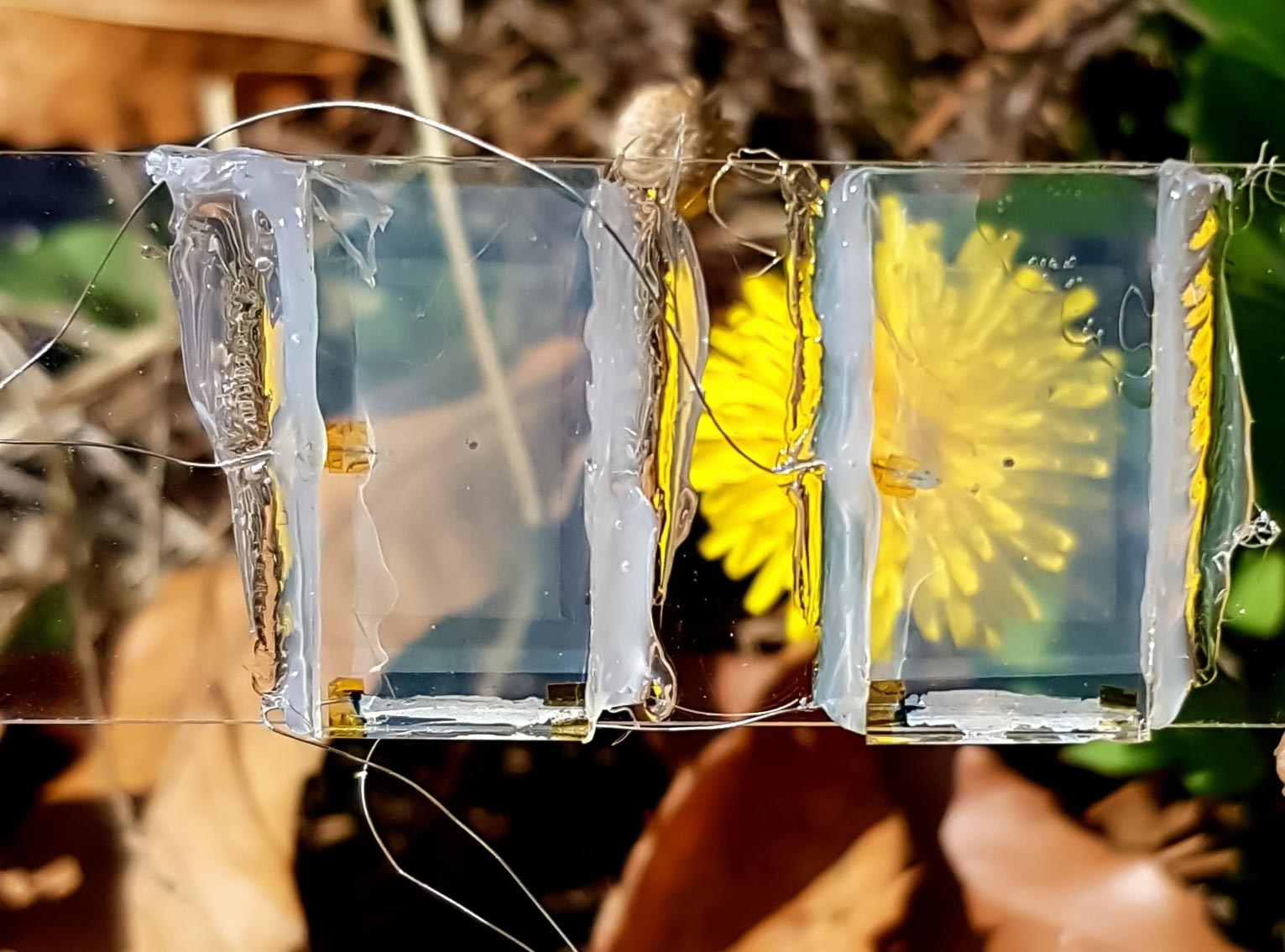
The solar cell created by the team is transparent and can be used in a wide variety of applications. Credit: Joondong Kim of Incheon National University
A new study led by scientists from Incheon National University in Korea shows how to make a fully transparent solar cell.
In a new study in Journal of Power Sources, an international team of researchers, led by prof. Joondong Kim from Korea, the first transparent solar cell. Their innovative technique is based on a specific part of the solar cell: the heterojunction, which consists of thin films of materials responsible for absorbing light. By combining the unique properties of titanium dioxide and nickel oxide semiconductors, the researchers were able to set up an efficient, transparent solar cell.
Five years after the Paris climate agreement, all eyes are on the world’s progress towards a carbon-free future. An important part of this goal is the transition of energy from fossil fuels to renewable sources, such as solar, water, wind and wave energy. Among them, solar energy has always had the highest hope in the scientific community, as the most reliable and abundant source of energy on earth. In recent decades, solar cells have become cheaper, more efficient and more environmentally friendly. However, current solar cells tend to be opaque, preventing their wider use and integration into everyday materials, which are confined to rooftops and in remote solar farms.
But what if the next generation of solar panels could be integrated into windows, buildings or even cell phone screens? This is the hope of Professor Joondong Kim from the Department of Electrical Engineering at Incheon National University, Korea. In a recent study published in the Journal of Power Sources, he and his colleagues described their latest invention: a fully transparent solar cell. “The unique properties of transparent photovoltaic cells can have different applications in human technology,” says prof. Kim.
The idea of transparent solar cells is well known, but this new application where scientists have been able to translate this idea into practice is an important finding. At present, the materials that make the solar cell opaque are the semiconductor layers, the ones responsible for capturing light and translating it into an electric current. That is why prof. Kim and his colleagues looked at two potential semiconductor materials identified by previous researchers for their desired properties.
The first is titanium dioxide (TiO2), a well-known semiconductor that is widely used to make solar cells. In addition to its excellent electrical properties, TiO2 is also an environmentally friendly and non-toxic material. This material absorbs UV light (a part of the light spectrum that is invisible to the naked eye) while transmitting most of the visible light sequence. The second material investigated to make this junction was nickel oxide (NiO), another semiconductor known to have high optical transparency. Since nickel is one of the misty elements on earth, and its oxide can be easily produced at low industrial temperatures, NiO is also an excellent material for making environmentally friendly cells.
Reference: “Transparent photovoltaic cells and self-propelled photodetectors by TiO2/ NiO heterojunction ”by Thanh Tai Nguyen, Malkeshkumar Patel, Sangho Kim, Rameez Ahmad Mir, Junsin Yi, Vinh-Ai Dao and Joondong Kim, 12 September 2020, Magazine for power sources.
DOI: 10.1016 / j.jpowsour.2020.228865
